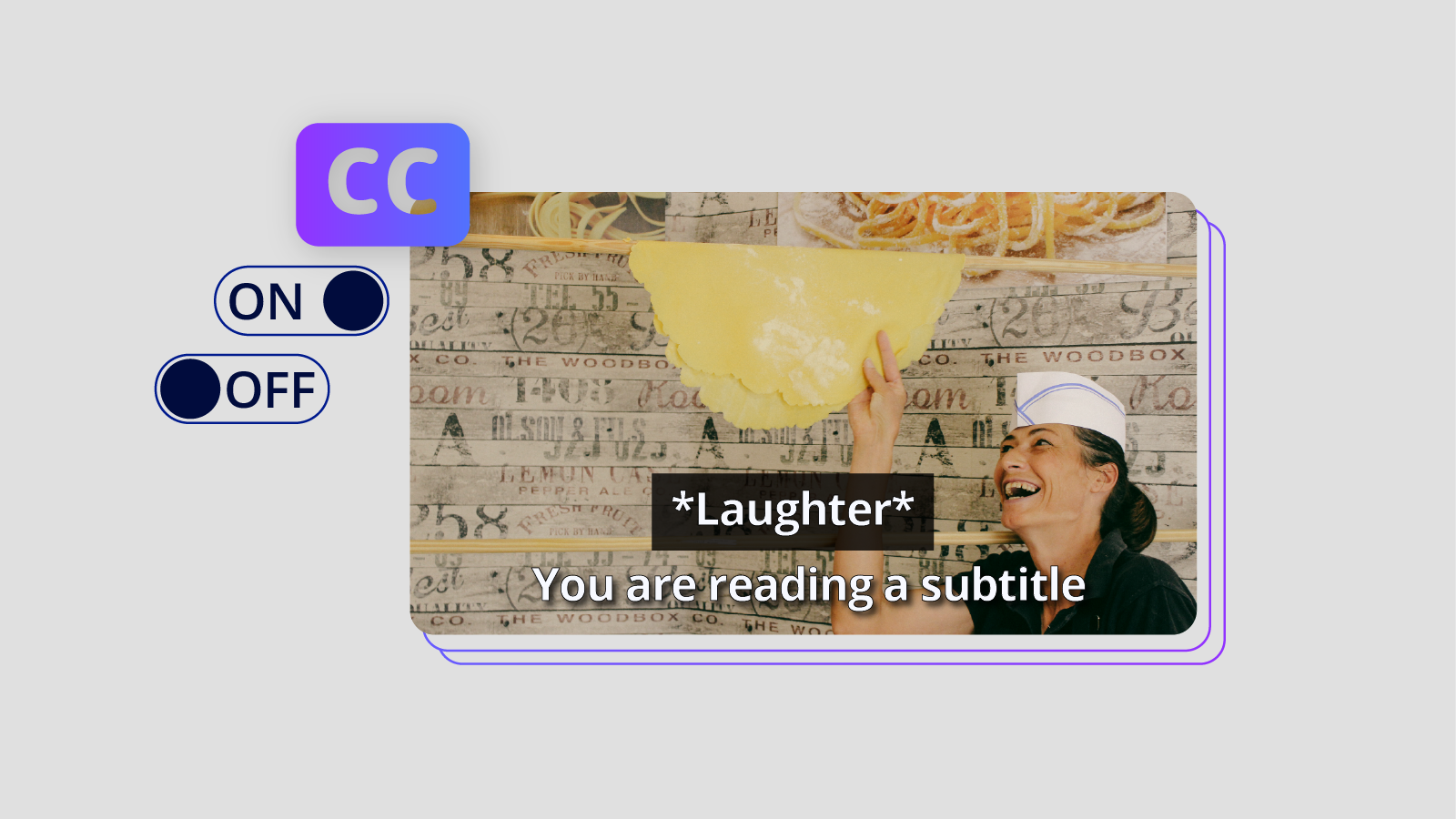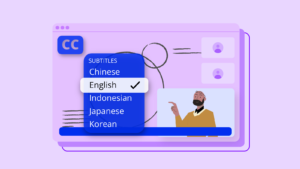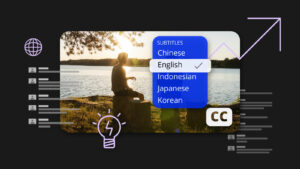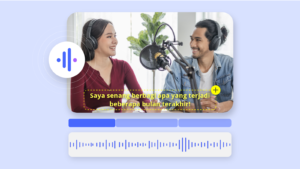We have all used the words ‘captions’ and ‘subtitles’ interchangeably at one point; referring to the text at the bottom of our screens. Strictly speaking, captions are the words spoken in the video without translation. Subtitles on the other hand are the translated captions; displayed in another language other than that spoken in the video.
Captions are further divided into two types: closed and open. So, in this guide, we will look at all three.
What are subtitles?
Subtitles are the translated text of what is being spoken in the video at the bottom of your screen; also known as translated captions. Subtitles help you understand what is being communicated in the video if you do not understand the spoken language.
The accuracy of subtitles depend on the quality of the translated text. Most content creators work with expert translators to achieve accurate translations for their subtitles. If done right, accurate subtitles can help you expand your reach to the international audience.
What are closed captions?

Just like subtitles, closed captions are also displayed at the bottom of the screen except that they are not translated. They represent the exact words spoken by characters, or sound effects presented in the video. These closed captions help the deaf or hard-of-hear community understand what is happening in the video.
Closed captions are particularly curated to suit the hard-of-hearing community as per the provisions of the Americans with Disabilities Act (ADA). This means that closed captions must be 99% accurate, and must also take note of other sounds used in the video such as ‘door opening’, music playing’, ‘footsteps approaching’ etc.
In some cases, closed captions are also required by law. For example, the Americans with Disabilities Act (ADA) prohibits discrimination against individuals with disabilities in all areas of public life. It requires that public accommodations and commercial facilities be accessible to individuals with disabilities. This extends to digital content, making video and multimedia accessibility a significant concern under the ADA.
What are open captions?
We talked of captions being categorised as either open or closed but both are designed to perform the same function. Similar to closed captions, open captions are also made to be used by the hard-of-hearing community and other beneficiaries by extension. The only difference is that open captions cannot be edited or corrected once added to the video frame. This means that the editor must be highly accurate and attentive while working with open captions.
Subtitles vs Open captions vs Closed captions. What is the difference?
Now that we have talked about all these aspects of captions. Let us now look at a summary of their characteristics based on the above findings.
| Subtitles | Open captions | Closed captions |
| Are translated into another language | Retains the original language of the audio | Retains the original language of the audio |
| You are not guaranteed accuracy | Guarantees you 99% accuracy | Guarantees you 99% accuracy |
| You don’t have to follow the ADA guidelines | Prompts you to follow the ADA guidelines | Prompts you to follow the ADA guidelines |
| Can be edited | You cannot edit once added | You can edit |
| Preferable if your purpose is to reach a wider audience base on a budget | Will give you more inclusivity; specifically with the hard-of-hearing community | Will give you more inclusivity; specifically with the hard-of-hearing community |
| Background sound such as “door opens” is not captured | Captures the background sound/noise of your video | Captures the background sound/noise of your video |
Who needs Subtitles and Closed captions?
We all need subtitles and closed captions. Imagine watching a video with a barely audible sound, or trying to keep up with your favorite series in a noisy environment. All these scenarios will prompt you to use subtitles. They are meant to increase your concentration in the video.
Specifically, here is a list of people/businesses who could benefit from subtitles and open captions;
- Youtube and other video platforms. If you are keen on attracting a non-native audience base for your youtube videos, subtitling is the way to go. With subtitles, various languages can be used to reach a target audience.
- Podcasters. As a podcaster, your audio must be clear. A heavy twang’ or accent on your part limits your audience from paying attention to the conversation. It is even better if you could use translated captions(subtitles) to acquire a new audience base.
- Tutorial videos. Any material used for learning must meet the requirements of the ADA (Americans with Disabilities Act). In this case, closed captions would be more suitable. Subtitles will come in handy when translation is necessary.
Add and Edit Subtitles with Auris AI
If we are to choose between closed captions and subtitles, the latter would be more suitable for a wider audience base. Translated captions have the power to make your content a globally recognized idea. The only challenge is achieving the high accuracy required to make it consumable by all; including the hard-of-hearing community. But that is where Auris AI comes in. This software guarantees highly accurate translations and partners with a variety of translation experts to convert speech to over 16 different languages.
How Auris AI Works
Auris AI is a free transcription, translation, and subtitling software that allows you to add and edit subtitles to the liking of your audience. The steps to highly accurate subtitles are also simple. All you have to do is upload the video to the website and follow the detailed guide in generating quality captions as shown below.
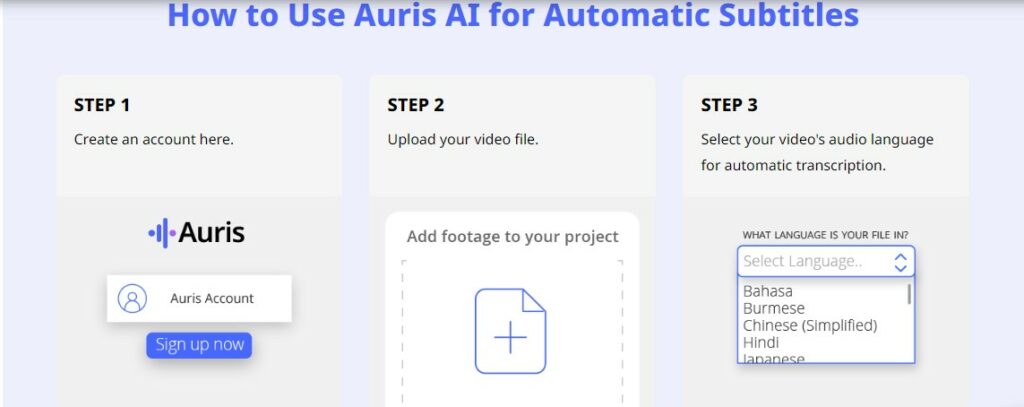

Conclusion
The bottom line is; closed captions and subtitles are one and the same except that subtitles are a translated version; meant to reach a no-native audience. As to who needs to use captions, we have a detailed guide on the importance of subtitles which gives a breakdown of the same.



